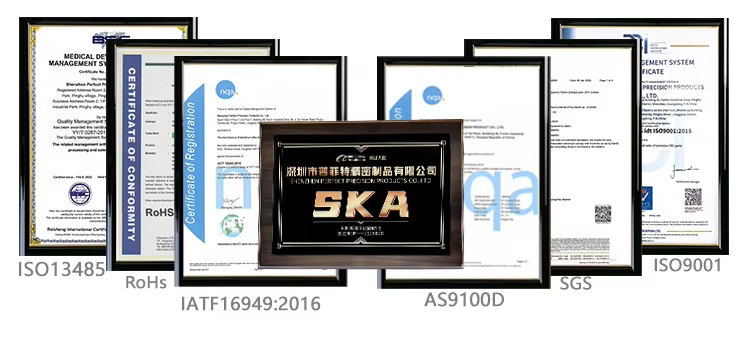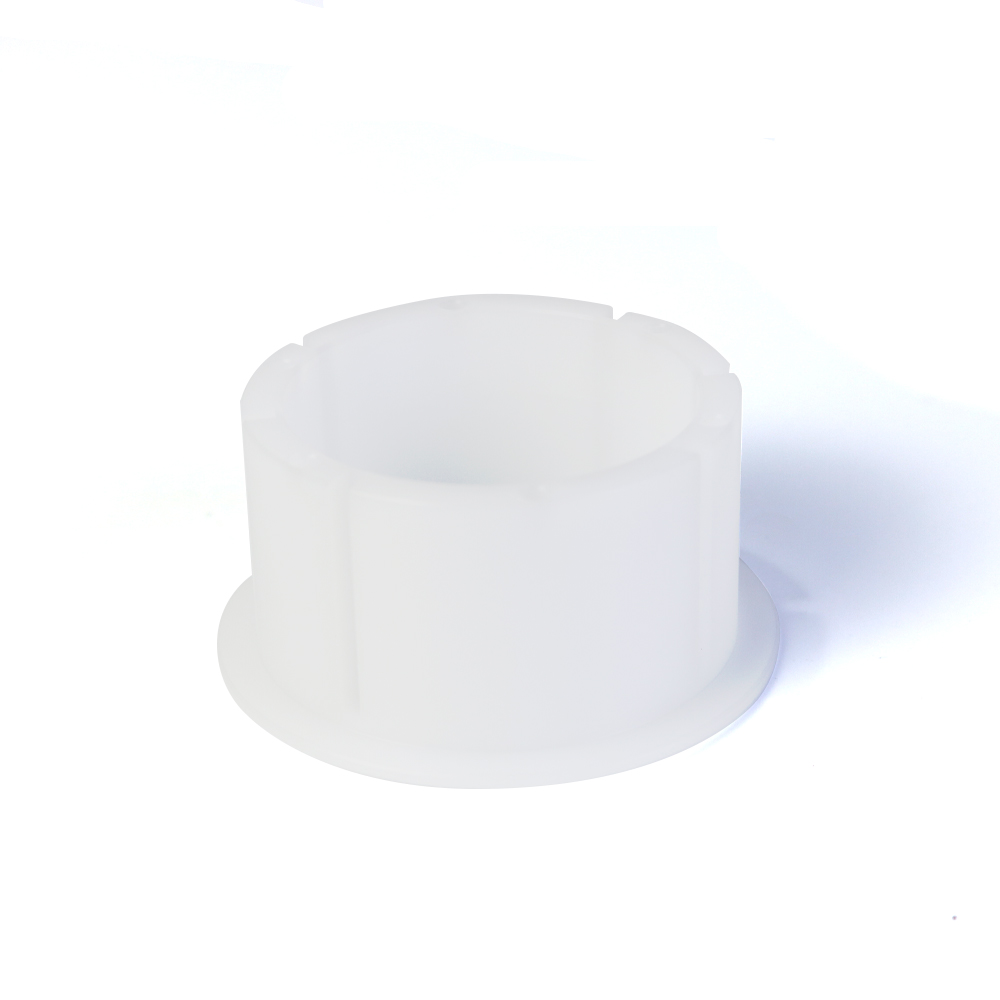Custom CNC Milling
Product Overview
In the world of modern manufacturing, achieving high precision and the ability to create complex geometries is essential, especially for industries that require intricate, one-of-a-kind parts. Custom CNC milling offers an ideal solution for these needs, providing a versatile and efficient way to create custom components with tight tolerances and exceptional detail.
What is Custom CNC Milling?
CNC milling (Computer Numerical Control milling) is a manufacturing process that uses a computer-controlled machine tool to remove material from a workpiece. In custom CNC milling, a specific design or specification provided by the customer is used to guide the CNC machine, allowing it to mill the part or component to the exact dimensions and tolerances required.
Unlike traditional manual milling, which relies on human operators for accuracy and control, CNC milling is highly automated and offers consistent, repeatable results. It’s used to create parts with complex shapes, holes, slots, and intricate designs, often from materials like metals, plastics, and composites.
Key Processes in Custom CNC Milling
Custom CNC milling involves a series of precise steps that transform raw materials into custom-designed components. The process is highly flexible, with various types of milling machines and tools available to cater to different needs.
1. CNC Machine Setup
The process begins with the setup of the CNC machine, where the raw material is securely clamped into the machine bed, and the appropriate cutting tools are selected. The machine’s control system is programmed with the design file (usually in the form of a CAD/CAM file), which contains detailed instructions for each milling operation.
2. Material Removal
The CNC machine uses rotating cutting tools to remove material from the workpiece. The material is typically removed in small, incremental layers. Depending on the complexity of the part, different types of milling operations can be performed, such as:
● Face milling: Cutting across the surface of the material to remove larger areas.
● End milling: Cutting along the sides of the workpiece to create cavities, pockets, or shapes.
● Slot milling: Creating specific grooves or slots in the material.
● Drilling and Tapping: Drilling holes or creating threads within the material.
The toolpaths are carefully controlled, ensuring that the cuts follow the design’s exact specifications.
3. Finishing Operations
Once the rough cuts are made, finishing operations are often required to achieve the desired surface finish and tight tolerances. These may include polishing, sanding, or additional milling operations to smooth the part’s surface and achieve the final dimensions.
4. Inspection and Quality Control
After the part is milled, it undergoes quality control inspections to ensure it meets the specified dimensions, tolerances, and other quality requirements. This is often done using tools like coordinate measuring machines (CMMs) or laser scanners. Parts may also undergo stress testing, visual inspection, and other assessments based on their intended application.
Materials Used in Custom CNC Milling
Custom CNC milling is highly adaptable, allowing manufacturers to work with a broad range of materials. The choice of material depends on the part’s intended application, strength requirements, environmental factors, and cost considerations. Common materials used in CNC milling include:
● Metals: Aluminum, stainless steel, titanium, copper, and brass are popular choices due to their strength, machinability, and versatility. They’re commonly used for high-performance applications in industries like aerospace, automotive, and defense.
● Plastics: Materials like nylon, acrylic, polycarbonate, and Delrin (acetal) are often used in custom CNC milling for applications requiring light weight, chemical resistance, or electrical insulation.
● Composites: Carbon fiber and fiberglass composites are used for parts requiring high strength-to-weight ratios, particularly in industries like aerospace and motorsports.
● Wood: CNC milling can also be used to create intricate designs in wood, typically for custom furniture or artistic projects.
● Exotic Materials: Custom CNC milling can accommodate materials like Inconel, PEEK, and ceramics, which are often required for highly specialized applications like medical devices or extreme environments.
Benefits of Custom CNC Milling
There are many advantages to choosing custom CNC milling for manufacturing components. Whether you’re producing a one-off prototype or a small batch of specialized parts, CNC milling offers a range of benefits, including:
1. High Precision and Accuracy
CNC milling is known for its ability to produce parts with extremely tight tolerances, often as small as ±0.001 inches (0.025 mm). This precision ensures that parts fit perfectly and perform as intended, which is critical in industries like aerospace, automotive, medical devices, and electronics.
2. Complex Geometries and Customization
CNC milling allows for the creation of highly complex geometries that would be difficult or impossible to achieve with traditional manual milling. Intricate features, such as cavities, threads, and multi-dimensional cuts, can be easily incorporated into the design, providing the flexibility needed for custom parts.
3. Versatility Across Materials
Whether you’re working with metals, plastics, composites, or exotic materials, custom CNC milling can be adapted to accommodate a wide range of materials. This makes it ideal for industries that require both durability and precision in their components.
4. Consistency and Repeatability
CNC milling is a highly automated process, meaning once the initial program and setup are complete, parts can be reproduced with consistent quality and accuracy. This is especially important for small batch production runs or when producing identical parts for assembly.
5. Rapid Prototyping
Custom CNC milling is ideal for prototyping, as it allows designers to quickly create and test functional parts. The rapid prototyping capabilities help businesses move from design to production more quickly, reducing time to market and allowing for iterative testing and design improvements.
6. Reduced Material Waste
Because CNC milling is a subtractive process, material is removed from a solid block or sheet. This allows for better control over material usage, reducing waste compared to other processes like casting or molding. Additionally, any leftover material can often be reused in subsequent machining processes.
7. Cost-Effective for Low to Medium Production Runs
Custom CNC milling can be more cost-effective than other methods, such as injection molding or die-casting, especially for low- to medium-volume production. There’s no need for expensive molds or tooling, and the process can easily accommodate small production batches or one-off parts.
Applications of Custom CNC Milling
Custom CNC milling is used across a wide range of industries that demand high precision, durability, and unique design features. Some of the most notable applications include:
● Aerospace: CNC milling is used to manufacture lightweight, high-strength parts such as engine components, turbine blades, and brackets. These parts need to meet stringent safety and performance standards.
● Automotive: Components like gears, engine parts, suspension components, and brackets are custom machined using CNC milling to ensure they meet the exact specifications required for vehicle performance and safety.
● Medical Devices: Custom CNC milling is widely used in the medical field to create implants, surgical instruments, and diagnostic equipment that require high precision, reliability, and biocompatibility.
● Electronics: Custom housings, connectors, and enclosures are often CNC milled to protect sensitive components and ensure proper fit and function in electronic devices.
● Energy: Parts such as turbines, pumps, valves, and other mechanical components used in the power generation, oil and gas, and renewable energy sectors are commonly machined using CNC milling
● Prototyping and Product Development: Many industries use custom CNC milling for rapid prototyping, enabling engineers and designers to create functional parts for testing before committing to full-scale production.
● Custom Furniture and Art: CNC milling can also be used for designing intricate wooden parts, decorative features, and artistic creations, offering precise cutting and shaping for custom designs.


We are proud to hold several production certificates for our CNC machining services,which demonstrates our commitment to quality and customer satisfaction.
1、ISO13485:MEDICAL DEVICES QUALITYMANAGEMENT SYSTEM CERTIFICATE
2、ISO9001:QUALITY MANAGEMENT SYSTEMCERTIFICATE
3、IATF16949、AS9100、SGS、CE、CQC、RoHS
Positive feedback from buyers
●Great CNCmachining impressive laser engraving best Ive everseensofar Good quaity overall,and allthe pieces were packed carefully.
●Excelente me slento contento me sorprendio la calidad deias plezas un gran trabajo This company does a really nice job on quality.
●If there is an issue they are quick to fix itVery good communication and fast responise times
This company always does what I ask.
●They even find any errors that we may have made.
●We have been dealing with this company for a number of years and have always recelved exemplary service.
●I am very pleased with the outstanding quality or mynew parts.The pnce is very competiive and the custo mer service is among the best Ive ever experienced.
●Fast tumaround rabulous quality,and some of the best customer service anywhere on Earth.
Q:What is the difference between CNC milling and traditional milling?
A:The primary difference between CNC milling and traditional milling lies in the control of the machine. In CNC milling, the machine is controlled by a computer program that automates the movement of the tool and workpiece, allowing for precise, repeatable cuts and complex geometries. In traditional milling, a machinist manually controls the machine, which can lead to less precision and slower production times.
CNC milling offers numerous advantages, such as increased speed, precision, consistency, and the ability to create parts with intricate designs. Traditional milling is still used in some applications but is less efficient for complex or high-volume production.
Q:How does CNC milling work?
A:CNC milling works through a series of steps, controlled by a computer program:
●Design: The part is designed using CAD (Computer-Aided Design) software, and the design is converted into a machine-readable format (usually G-code).
● Setup: The raw material is loaded onto the CNC machine, and the appropriate cutting tools are installed.
● Machining: The CNC machine follows the programmed instructions to cut, drill, or shape the material. The workpiece can be moved along multiple axes (typically 3, 4, or 5 axes) to achieve the desired geometry.
●Finishing: After the rough cuts are made, additional finishing processes, such as polishing or additional milling, may be performed to achieve the final surface finish and tolerances.
●Inspection: The part is inspected to ensure that it meets the required specifications, often using tools like CMM (Coordinate Measuring Machines) to check dimensions and tolerances.
Q:How long does it take to complete a custom CNC milling project?
A:The time required to complete a custom CNC milling project depends on several factors:
● Complexity of the Part: More intricate designs with multiple features or tight tolerances may take longer to machine.
● Material: Some materials, such as titanium or hardened steel, are more difficult to machine and may take more time.
●Size of the Part: Larger parts or high-volume production runs will typically take longer than smaller, simpler parts.
●Machine Setup and Programming: The time required to set up the machine and program the design can also impact lead times.
For prototypes, CNC milling can often be completed within a few days to a couple of weeks. For small production runs, it may take longer, depending on the complexity and number of parts.













